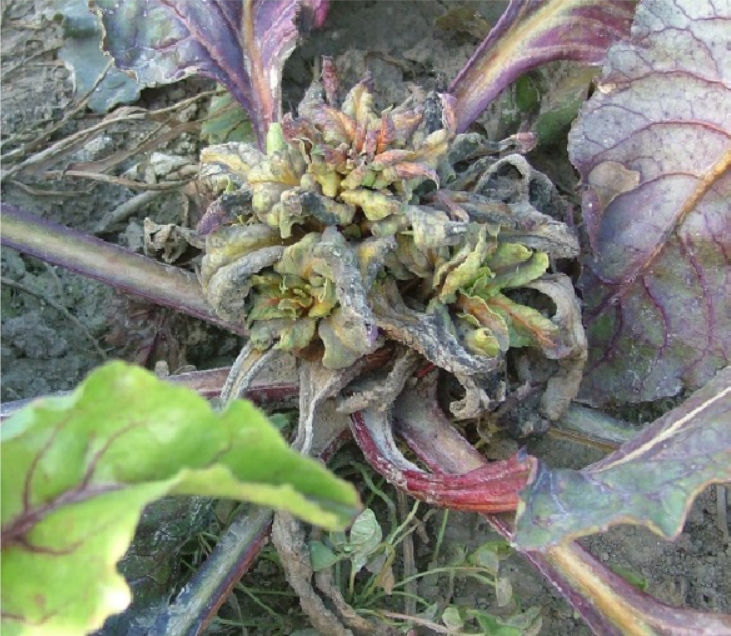Downy mildew & Fusarium
Downy mildew
Summary

Downy mildew (DM) in fodder beet is caused by Peronospora farinose, a fungus-like organism.
Identification
DM mainly affects younger leaves as rosettes. Systemically infected leaves are stunted, distorted, thickened and light green with curling margins. Such plants usually die. In cool, humid weather masses of fruiting structures and spores turn leaves purplish grey.
Importance
Occasionally seen in fodder beet crops; reduces plant density.
Spread
Initial infection stems from infected and contaminated seed; over-wintering spores in the soil or from nearby infected crops or volunteer plants. Spores can also spread via wind over long distances.
Management
Rotate crops to eliminate volunteer hosts and soil-borne inoculum. Use seed from a reputable source. Seed treatments can be used.
Fusarium(damping off, root/bulb rot)
Summary

Various Fusarium spp. cause beet damping off and root and bulb rots.
Identification
For damping off symptoms, refer to Rhizoctonia. Bulb rot presents as white to pink masses of spores at soil level and on the bulb. Internally, brown tissue necrosis is similar to that of R. solani. Root rots show as dark brown lesions and tip die-back.
Importance
Damping off caused by soil-borne Fusarium spp. together with other pathogens can occasionally cause significant plant loss at establishment. Fusarium bulb rots can occur in the absence of break crops.
Spread
Fusarium spp. can be both soil-borne and rain-splashed. Spores can remain viable in the soil for many years without a host, and can also be spread by stock and machinery.
Management
Allow at least three seasons between crops if infection occurs. Restrict movement of soil via machinery and livestock from infected fodder crops.

